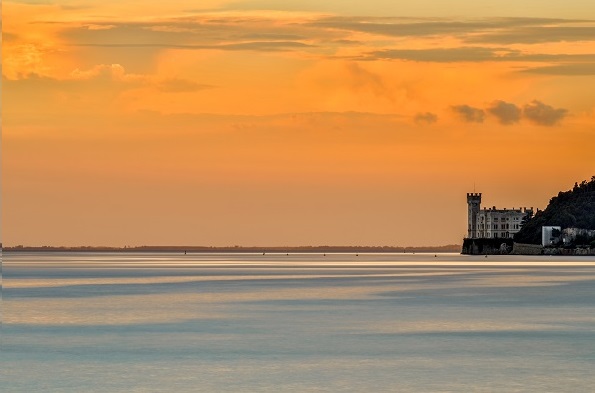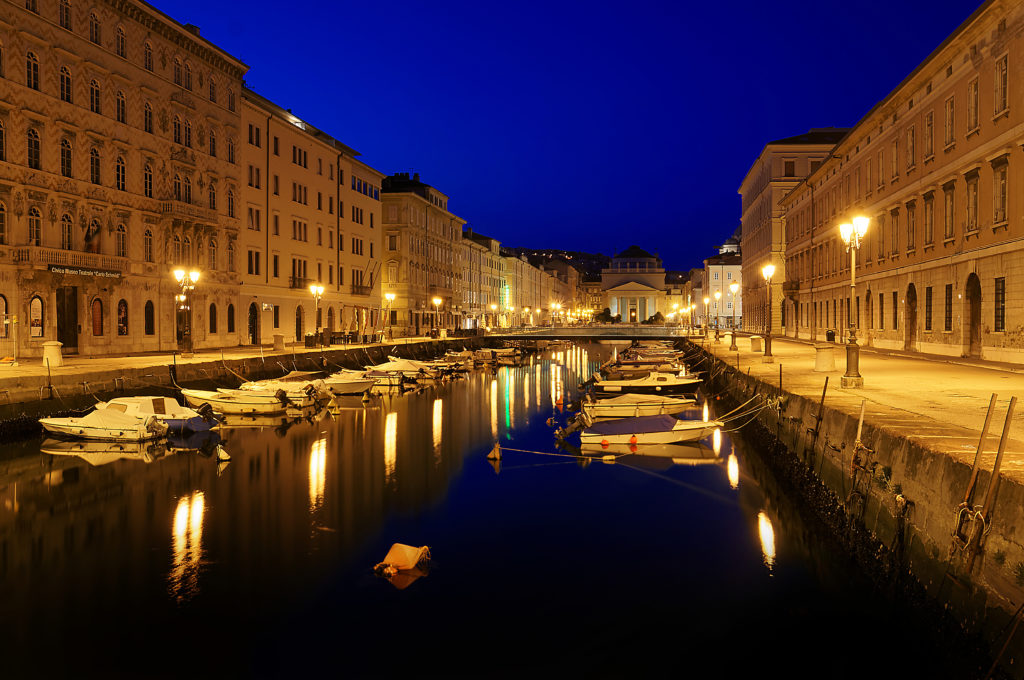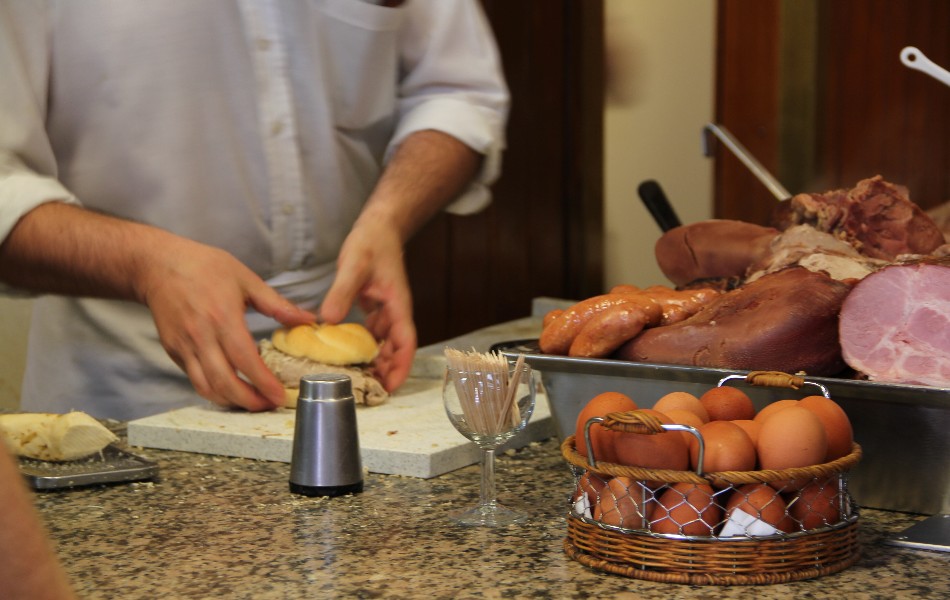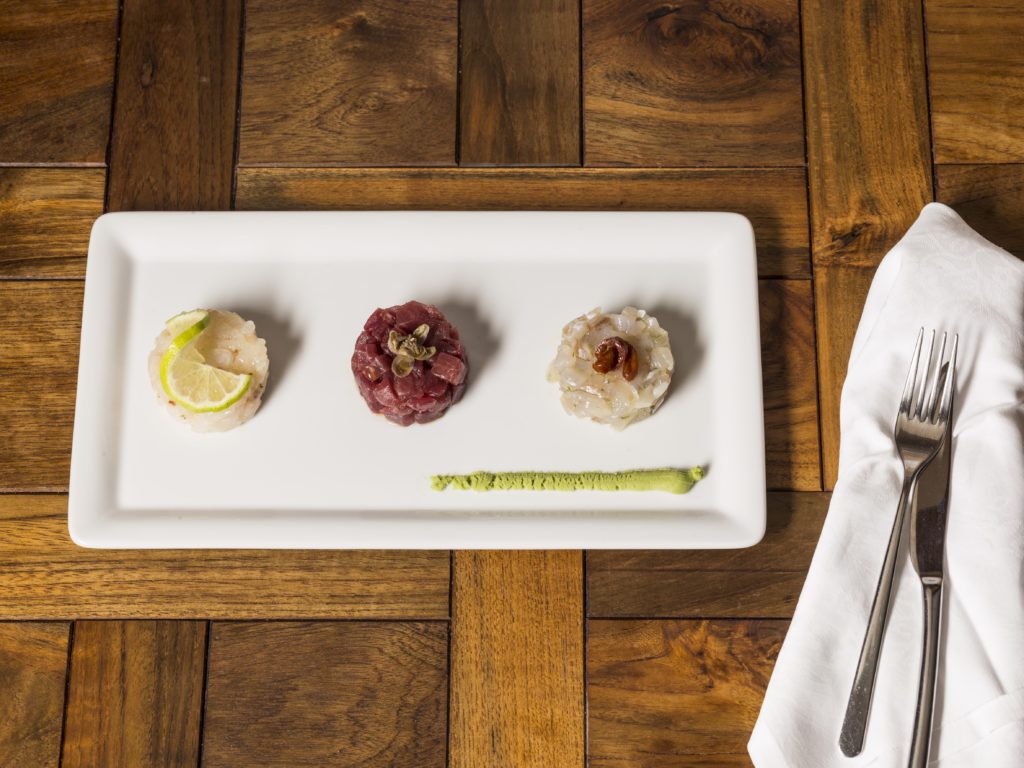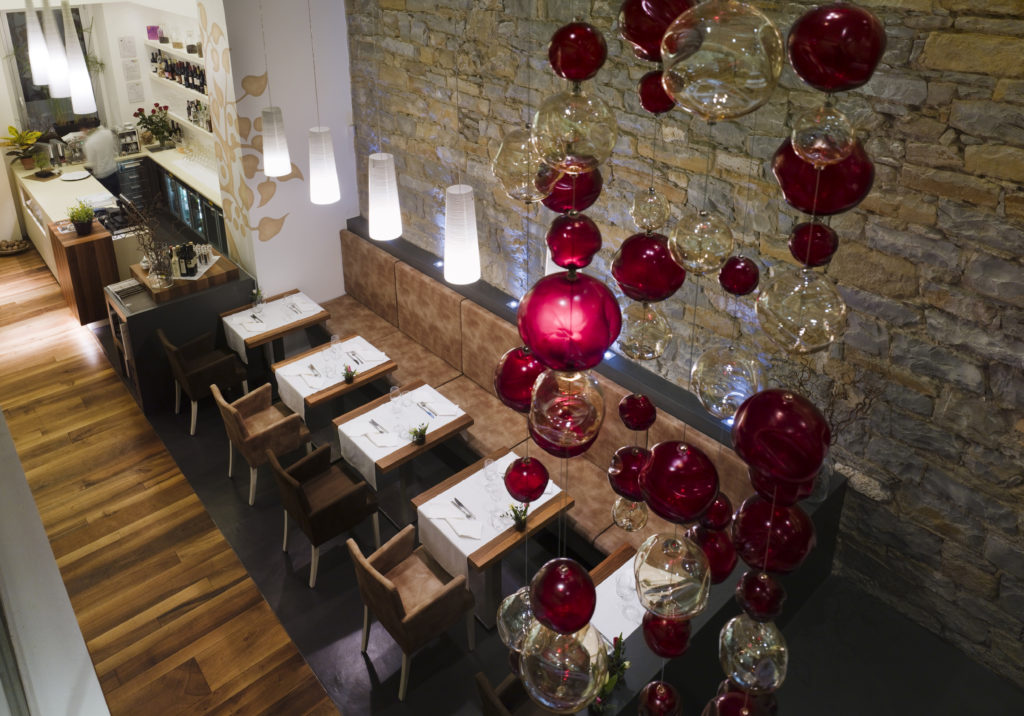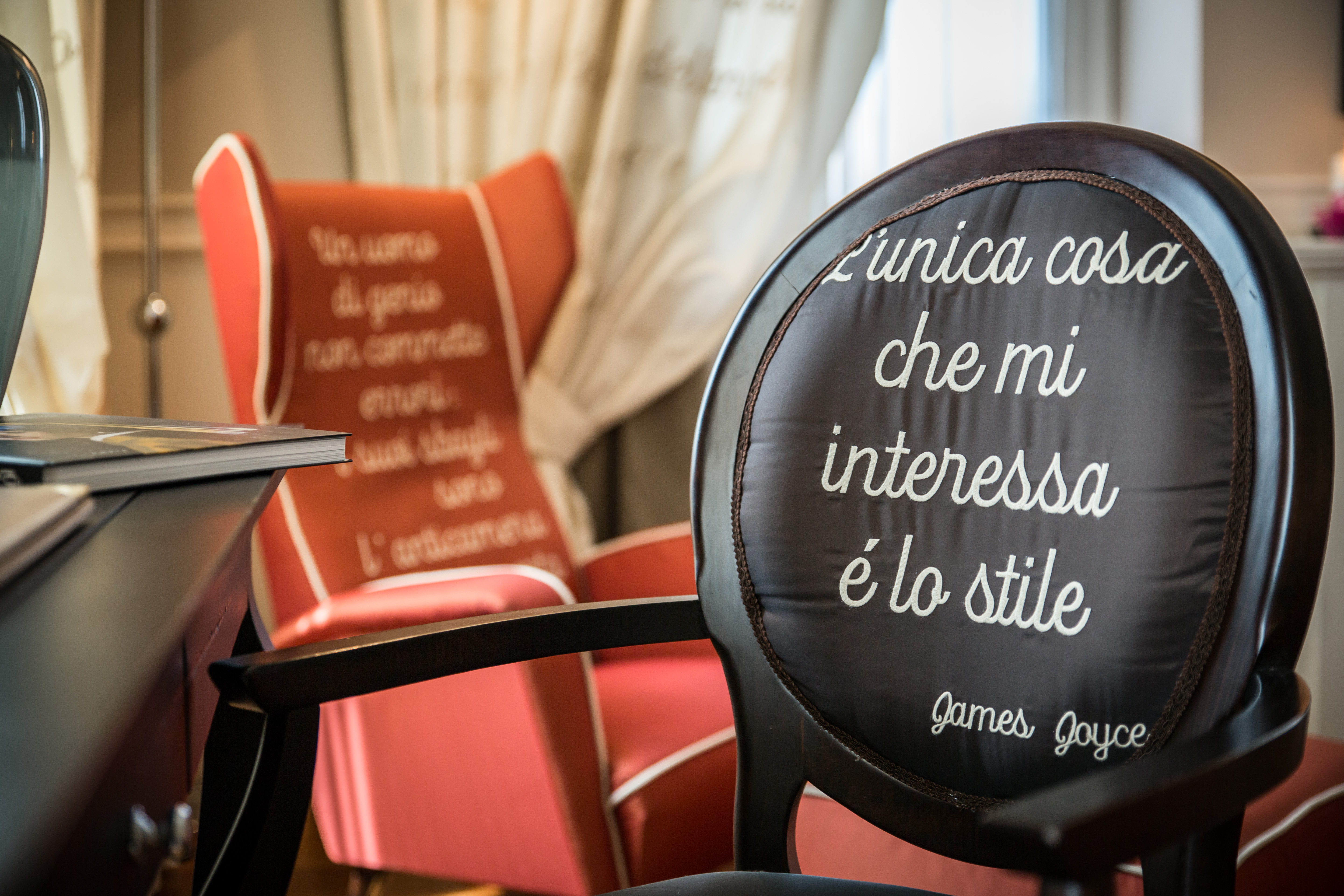Boasting a richly varied history and culture, Trieste is in all respects a border town, whose elegant pose is occasionally shaken by the turbulent Bora wind gusting from the North East. Discover its castles, architecture, culinary traditions, literary heritage and Mediterranean culture.
A visit to Trieste may well start from Miramare Castle, perhaps its most iconic landmark. Built in 1860 for Austrian Archduke Ferdinand Maximilian, the castle combines Gothic and Medieval elements, in keeping with the eclectic fashion of the day. The Adriatic Sea and the seashore park, rich in rare botanical species and peculiar decorations, provide the Hapsburg city with a Mediterranean background, creating a fairy-tale scenery able to revive the spirit of times gone by.
The surrounding area is also a WWF marine nature reserve, where the visitor can experience scuba diving and virtual tours.
The stretch of coast between Miramare and Trieste city centre is Barcola, the triestini‘s favourite place for summer playtime. When evening comes, after bathing and sunbathing, a Spritz at one of the pine grove’s kiosks is highly recommended.
A good place to start is Molo Audace. Walk along the shore until the end of the dock by the Gulf of Trieste. From here you can admire the elegant palaces of Piazza Unità, often regarded as the city’s parlour. Formerly known as ‘Piazza Grande’, the square was renamed after Trieste’s annexation to the Kingdom of Italy in 1918 and is the largest seaside square in Europe. Look for the halberds, symbol of the city, and for the two figures striking the hours on top of the Town Hall, Mikeze e Jakeze, who will be found again later on. The night view of the square is not to be missed.
This pedestrian area, next to Piazza Unità, is the most lively spot of the Zità Vecia (‘old town’, in the local dialect). The visitor allowing themselves to get lost amid Cavana’s alleys will find a number of bars, cafes, restaurants, quaint corners and little squares, some of the highlights of the area being the Arch of Richard, the neoclassic Rotonda Pancera and the modern art gallery Revoltella. James Joyce lived here during his last period in Trieste.
On top of the old town, a short walk from Cavana, is San Giusto Hill, which features the ruins of a Roman forum, the medieval Castle and San Giusto Cathedral. At the entrance of the castle stand, once again, Mikeze and Jakeze (the original copies). If the origin of these folkloric figures could be a matter of debate, undisputed is the locals’ attachment to them. The castle holds permanent and temporary exhibitions, but the view from the bastion over the gulf is worth the visit on its own.
Head downhill to find the 12th century Basilica di San Silvestro and the Roman Theatre, brought back to life in recent times following the demolition of part of the old town. The theatre faces the Jewish Ghetto, whose little maze of alleys is dotted with antique shops and leads to another major square, Piazza della Borsa (Stock Market Square).
A little further on is the modern part of the city, an orthogonal grid of streets and elegant palaces called Borgo Teresiano. This brilliant example of neoclassical city planning dates back to the early 18th century, when Emperor Charles VI and Empress Mary Theresa sought to expand the city, soon after declaring it ‘Free Port of the Austrian Empire’. Around the Grand Canal, visitors will find the eclectic Gopcevich Palace, Piazza Ponterosso, a life-size statue of James Joyce and the Serbian Orthodox Church; one of the many non-catholic places of worship to remind one of Trieste’s history of religious tolerance.
If time allows, the historic Tram de Opcina links the city centre to the Carso Plateau, up along a steep and panoramic route. The plateau spans Italy, Slovenia and Croatia, offering hiking tracks, border villages and the typical osmize; family-run taverns open on a rotating basis in accordance with an old Hapsburg edict. Boasting grand views on the Gulf of Trieste, the Carso also has the best spots from which to watch the international sailing regatta Barcolana, the most important event of the year, held on the second Sunday of October.
The city’s other attractions include the lighthouse, the Risiera di San Sabba (a Nazi concentration camp during WWII), the Giant Cave, Duino Castle and the Rilke Path.
Eat and drink
The core of Trieste’s culinary culture unfolds in the buffets, many of which can still be found all over town. Reflecting the city’s Middle-European heritage, these down-to-earth taverns serve boiled and cured meat, fried food, homemade desserts and other typical dishes. Da Pepi is arguably the most representative of these city institutions, with its history reaching as far back as 1897. The mixed platter comes with sausages, ham, cotechino and all things pork, cooked by the traditional method in caldaia and served with mustard and kren (fresh spicy horseradish), while the tongue in a bread roll is a must for a quick take-away. Due to its fame and history, prices here are slightly higher than the average buffet, but they are certainly well worth the experience.
Another buffet, Da Giovanni has been serving typical specialties since 1961. The genuine, rustic and rich menu includes ham in bread crumbs, goulash, fried fish and vegetables, cured meat, cheese, dumplings and soups. Try gnocchi di susini (large potato dumplings filled with plum and cooked in butter and cinnamon), order seafood on a Friday and mind that no meal here can go by without a glass of (possibly not too fancy) regional wine. If this is the local answer to fast-food culture, then long live the buffet.
Halfway between a buffet and a fine restaurant, Nerodiseppia is a family-run trattoria where the attention to quality doesn’t exclude an easy-going approach. Even though a few meat and vegetarian options are available, a fish-based meal is a sure hit here. Some of the highlights on a sample menu are salmon, shrimp and seabass tartare, bigoli pasta with tuna roe and pistachio, or monkfish soup with white polenta. The wine selection reflects the philosophy of the place, featuring regional wines from Trieste and the whole Carso region.
Al Bagatto started out as an old-town tavern in 1966, and went through different stages over three generations of family management. After becoming one of the first places in town to find quality fish, it upgraded to a fine gourmet restaurant in recent times. Today’s menu reflects a sophisticated cuisine aware of regional traditions, promoting seasonal and local produce from Trieste and the surrounding area. In line with the quality provided, prices are above the mid-range.
As a high-range restaurant, Pepenero Pepebianco seeks to provide a sophisticated culinary experience in a classy atmosphere. Spanning meat, fish and vegetarian options, the restaurant offers three-course menus at around €30, although the full experience lies in the seven-course gourmet menu. Chef Michele Grandi proposes refined and unexpected combinations, aimed at finding the perfect balance between tradition, local produce and innovation. Bread, pasta, desserts and pastries are homemade, while the cellar lists 150 wines from Italy, Slovenia, Croatia and France.
In the heart of Cavana, SaluMare is a fish laboratory specialising in aperitivo nibbles (‘rebechin’, for the locals). Baccalà mantecato (salt cod paste) is one of the favourites, along with pulpo a la gallega (Galician octopus), polenta and cuttlefish, bottarga di muggine (mullet roe) and ceviche, all to be enjoyed with a glass of sparkly wine. After getting started, seafood lovers will have a hard time leaving the premises.
Hotels
If you enjoy staying in hotels with a story to tell, then Victoria Hotel Letterario is about as good as it gets. Once frequented by the legendary Irish writer James Joyce, who spent his formative years in Trieste during the early 20th century, this stylishly designed 4-star hotel is in the heart of the city, just 15 minutes’ walk from the beach and 10 minutes from Piazza dell’Unità d’Italia. Housed in a stunning, neo-classical, 19th century building, a total of 44 spacious guest rooms and 5 adjoining apartments come with warm, softly coloured fabrics and elegant parquet flooring. Some also feature four-poster beds, fireplaces and bookshelves. In tribute to its rich literary heritage, the James Joice Suite is the hotel’s flagship offering, with quotes from some of his most famous works inscribed on the suite’s furnishings. Elsewhere in the hotel, amenities include a wellness centre featuring a sauna, Turkish bath and hot tub.
Another Trieste hotel steeped in history is the Savoia Excelsior Palace. Built in 1911, it boasts an idyllic seafront setting that serves to soften its imposing exterior. Like the aforementioned hotel, it has also been patronised by distinguished figures. Artists, diplomats and aristocrats have all stayed here down the years. After a three-year restoration, the hotel’s original style has been restored but with the added benefits of modern technology (WiFi, power showers, Jacuzzi baths). The ornate Boiserie has been expertly brought back to life and the belle-époque stained glass windows sparkle once again. For a more affordable option but without compromising on location, the 3-star Forvm Boutique Hotel is a 5-minute walk from Piazza della Borsa Square and Trieste’s Port. Elegant guest rooms come with classically-styled furnishings, private bathrooms and free Wi-Fi.
Caffè Letterari
Step into one of the Vienna-style cafes to travel back in time and breathe the atmosphere of these 19th-century hangouts of artists, intellectuals and political activists. The likes of Stendhal, James Joyce, Italo Svevo and Umberto Saba used to be regulars here, making Trieste a vibrant hub of modernist avant-guard literature in Europe. Coffee culture is another institution, and it is different from anywhere else in Italy, literally: order a ‘nero‘ if you want an espresso, a ‘capo‘ if you’re after a macchiato and befriend a local for more elaborate requests!
Opened at the beginning of World War I, when Trieste was still part of the Austro-Hungarian Empire, Caffè San Marco immediately became the hub for a circle of students and intellectuals. It also functioned as a clandestine workshop making fake passports for irredentist activists to enter the Italian territory. The café was therefore destroyed one year later by Austrian soldiers and remained abandoned for decades. Nevertheless, it still maintains the original atmosphere, where lingering at the table for a while is better than a quick stop at the counter.
In 1830 Tomaso Marcato opened the oldest of Trieste’s literary cafés, Caffè Tommaseo, which was also the first place to sell ice cream in the city. The interiors still feature elegant neoclassical furniture, including fine wall mirrors from Belgium. The café has recently started a partnership with a historic winery, Bishoff, which has been operating in Trieste since 1777. Caffè Tommaseo is located in the square of the same name, in between Piazza Unità and the Grand Canal.
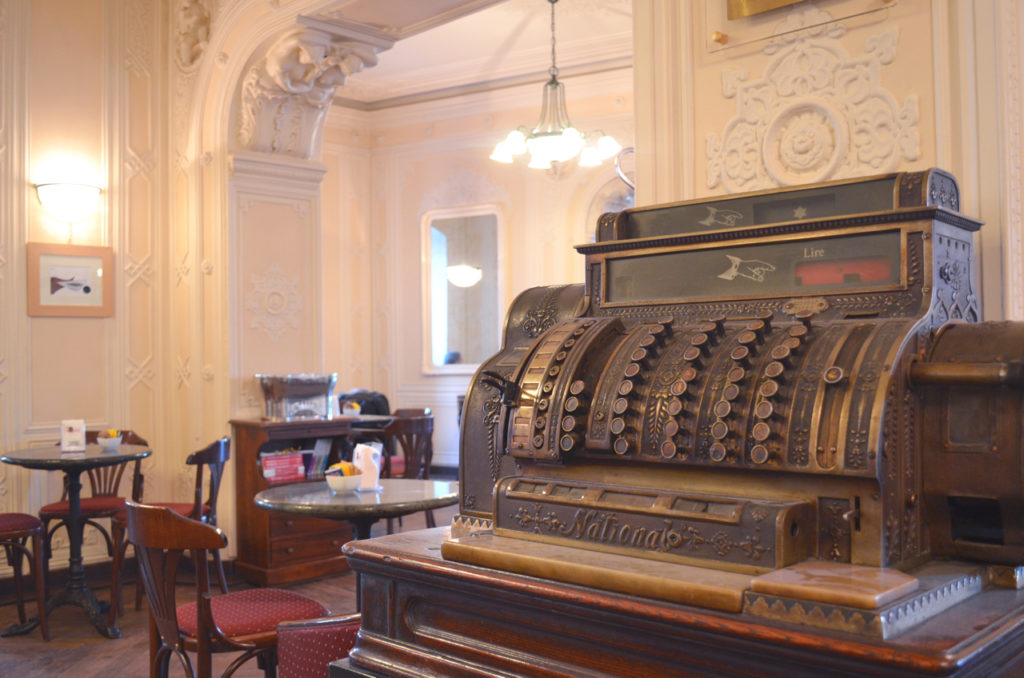
A vintage till at Caffè Tommaseo (Photo: Caffè Tommaseo)
At the ground floor of Stratti Palace, Caffè degli Specchi is the only historic café left of those which used to look out on Piazza Unità. Given the location, the café has always been regarded as Trieste’s sitting room, frequented by intellectuals, businessmen, politicians and officials. The current management has been pursuing a new policy, aimed at making Caffè degli Specchi less exclusive and more suitable for all. Stop by for a coffee and a pastry or for a meal, best enjoyed on outdoor seating with the splendid background of Piazza Unità.
Caffe Tergesteo is located in the gallery of the same name, linking Piazza della Borsa to the main theatre of the city, Teatro Verdi. Opened in 1863, the café was recently renovated and conserves from its early days a few glass windows depicting episodes of Trieste’s history.
